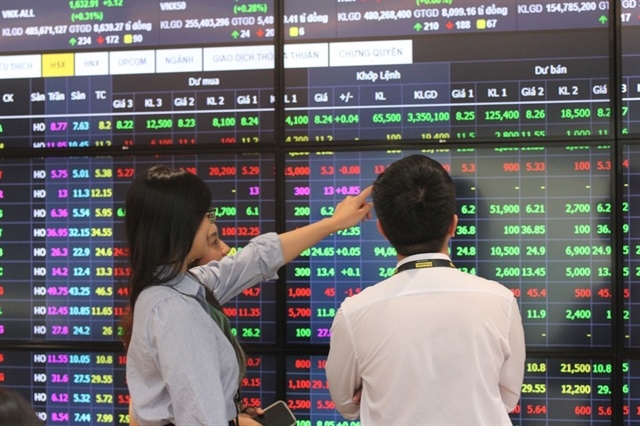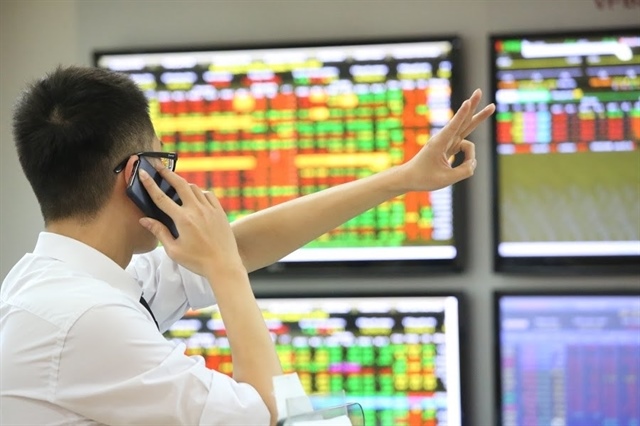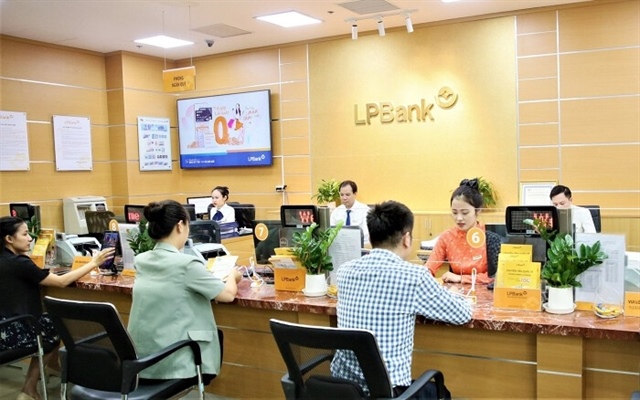VN shares predicted to improve in 2016
VN shares predicted to improve in 2016
The stock market will see large improvements on both local markets this year, despite many problems in both local and global economic conditions, said a Viet Nam Investment Securities Company analyst.

Nguyen Huu Binh, the analyst, said the benchmark VN Index on the HCM Stock Exchange might reach 670 points by the end of this year. The southern index lost 0.1 per cent on the last trading day of 2015, though it rose 6.1 per cent, in general, to close last year at 579.03 points.
The Ha Noi Stock Exchange's HNX Index will likely end this year at 90 points, Binh said. The Ha Noi-based index gained 0.9 per cent on December 31 to finish last year at 79.96 points, a decrease of 3.6 per cent over the year.
Both local indices will receive strong support from foreign purchases for local stock assets, as they have been granted permission to raise capital in Vietnamese public companies and have disregarded fear over possible losses resulting from the weakened Vietnamese dong against the US dollar. Other concerns include the free trade agreements signed between Viet Nam and other countries, which will benefit local exporters, such as textile and garment firms and fishery companies, he said.
Last year, the stock market received a positive impact from the three policies which were issued by the Government and came into effect last year, including Decree 60/2015/ND-CP, which was issued on June 26 and came into effect in September.
Decree 60 allows foreign investment without a limit in public companies that are not subjected to conditional businesses, and in government and corporate bonds. Investors have expected the decree to boost market liquidity, create investment opportunities for foreign investors and upgrade the Vietnamese market's status from a frontier market to an emerging market.
Another policy was Circular 36/2014/TT-NHNN, which took effect in February and set safe operational limits and new ratios for credit institutions and branches of foreign-owned banks in Viet Nam, as well as put limits on stock investments and set conditions for banks when offering loans.
This circular aims to prevent the cross-ownership between banks and credit institutions in financial stock assets and ensure the transparency and financial security for financial firms if they seek to make investments in financial products.
The last policy was the decision made by the State Capital Investment Corporation to sell stakes in 10 large companies, including dairy producer Vinamilk (VNM), software producer FPT Corp (FPT) and Tien Phong Plastic JSC (NTP), in order to gain US$4 billion for the State budget.
This decision was a significant move by the Government to provide opportunities for both local and overseas investors who want to make investments in quality products on Viet Nam's stock market.
Meanwhile, the national stock market will see problems with both local and international markets regarding the decline of global oil prices, the weakened Chinese yuan and interest rate hikes made by the US' central bank, Binh said.
Global oil prices have been falling as demand drops and the Organisation of Petroleum Exporting Countries (OPEC) decided not to cut production. Also, the US benchmark crude West Texas Intermediate (WTI) has fallen 26 per cent since the beginning of last year to $37.04 per barrel on December 31, posting a nearly eleven-year low.
Oil prices will likely see further drops as Iran, one of the largest crude exporters, is lifted from the 40-year trading ban imposed by the US, which will flood the global oil market with more products from Iran.
As a result, the decline in global oil prices will hurt local energy stocks, whose profits depend largely on selling oil products imported from overseas suppliers. PetroVietnam Gas Corp (GAS), the largest energy company, has dropped nearly 50 per cent in the past year.
Another factor that affected the local stock market was the heavy pressure caused by the weakened Vietnamese dong against the US dollar, which depends on the interest rate hike taken by the US' central bank and the depreciation of the Chinese yuan. The forex rate between the Vietnamese dong and the US dollar sometimes reached the trading band of VND22,547 per dollar, as set by Viet Nam's central bank.Further, the Chinese yuan has been devalued by 4.6 per cent against the US dollar over the last year, as China encounters a slowdown in its export-based economy, especially after the yuan was added into the reserve basket by the International Monetary Fund (IMF) in late November.
Meanwhile, in the middle of December the US central bank announced the first interest rate hike since 2006, and the decision has caused foreign investors to withdraw capital from emerging markets amid fears that weakened local currencies against the US dollar might result in losses for their investments.
Market liquidity or investment flow will remain a problem for the stock market, Binh said, adding that the daily trading volume must be at least 150 million shares in order to ensure the stock market's development.
Last year, the stock market traded a daily average volume of 160 million shares worth VND2.5 trillion ($111 million), a decrease of 17 per cent from 2014.
UPCoM Index to be calculated with new method
The Ha Noi Stock Exchange (HNX) will use new methods of calculation for the UpCoM Index beginning today.
Under these new methods, the UpCoM Index will be calculated using a free-float ratio, as defined in the Ground rules of HNX Indices.
The UPCoM Index is a price index that is calculated based upon the free float adjusted market capitalisation of all stocks registered for trading on HNX, with the free-float ratio equal to 5 per cent or more. The review of constituents' stocks is conducted quarterly, according to the periodic adjustment of the free-float factor, as stipulated in the ground rules of the HNX Indices.
Further, from today the Ha Noi Stock Exchange will also stop calculating the UPCoM FF Index.
As of June 25, 2015, HNX has carried out the pilot implementation of the UPCOMFF Index for all companies registered on UPCoM on the Ha Noi Stock Exchange.



























